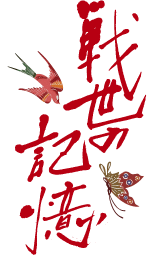
“War Experiences in Osaka”
“War Experiences in Osaka”
Eiichi Fujimoto, 90 years old
(Place of birth: Higa, Gusukube Village, Miyako-gun, Okinawa Prefecture)
Around 1944, we had a vocational training center located at Tsujimachi near Naminoue. The vocational training center was in a rented room and hundreds of trainees were undergoing the training there. They all were supposed to go to the military factories in Tokyo and Osaka, after the completion of their training.
In Miyako, the doctor called Taisei Miyaguni recruited the applicants who finished their training, helping them find employment in the main island of Japan.
Having trained at the training center for a month, I was waiting for the ship at Koniya in Amami-Oshima to go to mainland Japan. Learning that Tsushima-Maru was attacked and sunk, the ship I was on board and others formed a fleet with a torpedo-boat destroyer guarding us and headed for mainland Japan. Nonetheless, we had to deal with many troubles while we were on our way to mainland Japan, such as enemy plane attacks, submarines hiding under the sea and the explosions of torpedoes which took place very close to our ship. The whole journey was rough.
When we arrived in Kagoshima, we learned that our destination factory was already determined. It was a military factory where they produced and assembled machines, wings and tires for airplanes, parts for submarines and torpedo dischargers. In those days, even college students did not go to their colleges, but worked at the factories instead, called Teisin-tai (volunteer corps), producing and assembling various parts.
I was living in a dormitory. Because the whole country was under militarism, even the dormitory students had to take the eligibility test for the military. In addition, we had Seinen Gakkou (youth school) and the students there were going to volunteer when they turned 20 years old to be in the Navy or Army as soldiers. I, too, was looking to be a soldier to protect the country. I applied for the Navy, but I was not accepted. I was told by the inspector, “You are flat-footed. The deck on the ship is very slippery. We cannot accept you.”
(Withdrawal from Osaka after the war)
I withdrew from Osaka in the 3rd evacuation program by taking the American evacuation ship called LST to Hakata in Kyushu. I remember that the rice I bought was confiscated by the police there and there were many people who withdrew from Manchuria and China.
(Osaka after the war)
After the war, considering the Americans occupying Japan, the Japanese Army had the students remaining in the dormitory dispose of the parts and explosives in a big lake.
(Air raid in Osaka)
I was so scared by air raids. B29s carried out the air raid to Osaka around 9 o’clock at night. They dropped bombs from 10,000 meters up in the sky. It was a horrifying bombing. Tenroku, Tenjinbashi and Umeda were severely hit by the bombs and turned into burnt fields. Upon the air raid, the siren was sounded, called an “alert warning,” which was a loud, long alarm first, followed by the “air raid alarm” which was a shorter alarm. Although the Japanese Army fought back with anti-aircraft guns, the American bombers (B29s) were flying far above the shooting range of the anti-aircraft guns.
When I was working at the military factory, I heard news saying that Miyako was completely destroyed and all the houses and people were gone. I did not know what to do and was lost.
(Looking back at the war)
I do not believe that anyone likes to fight war. I trust that “No more war” would be the wish of human beings. To eliminate war from the world, people need to be educated. Once a war is started, hundreds of thousands of innocent people will lose their lives. I wish that we will never go into war.
Eiichi Fujimoto, 90 years old
(Place of birth: Higa, Gusukube Village, Miyako-gun, Okinawa Prefecture)
Around 1944, we had a vocational training center located at Tsujimachi near Naminoue. The vocational training center was in a rented room and hundreds of trainees were undergoing the training there. They all were supposed to go to the military factories in Tokyo and Osaka, after the completion of their training.
In Miyako, the doctor called Taisei Miyaguni recruited the applicants who finished their training, helping them find employment in the main island of Japan.
Having trained at the training center for a month, I was waiting for the ship at Koniya in Amami-Oshima to go to mainland Japan. Learning that Tsushima-Maru was attacked and sunk, the ship I was on board and others formed a fleet with a torpedo-boat destroyer guarding us and headed for mainland Japan. Nonetheless, we had to deal with many troubles while we were on our way to mainland Japan, such as enemy plane attacks, submarines hiding under the sea and the explosions of torpedoes which took place very close to our ship. The whole journey was rough.
When we arrived in Kagoshima, we learned that our destination factory was already determined. It was a military factory where they produced and assembled machines, wings and tires for airplanes, parts for submarines and torpedo dischargers. In those days, even college students did not go to their colleges, but worked at the factories instead, called Teisin-tai (volunteer corps), producing and assembling various parts.
I was living in a dormitory. Because the whole country was under militarism, even the dormitory students had to take the eligibility test for the military. In addition, we had Seinen Gakkou (youth school) and the students there were going to volunteer when they turned 20 years old to be in the Navy or Army as soldiers. I, too, was looking to be a soldier to protect the country. I applied for the Navy, but I was not accepted. I was told by the inspector, “You are flat-footed. The deck on the ship is very slippery. We cannot accept you.”
(Withdrawal from Osaka after the war)
I withdrew from Osaka in the 3rd evacuation program by taking the American evacuation ship called LST to Hakata in Kyushu. I remember that the rice I bought was confiscated by the police there and there were many people who withdrew from Manchuria and China.
(Osaka after the war)
After the war, considering the Americans occupying Japan, the Japanese Army had the students remaining in the dormitory dispose of the parts and explosives in a big lake.
(Air raid in Osaka)
I was so scared by air raids. B29s carried out the air raid to Osaka around 9 o’clock at night. They dropped bombs from 10,000 meters up in the sky. It was a horrifying bombing. Tenroku, Tenjinbashi and Umeda were severely hit by the bombs and turned into burnt fields. Upon the air raid, the siren was sounded, called an “alert warning,” which was a loud, long alarm first, followed by the “air raid alarm” which was a shorter alarm. Although the Japanese Army fought back with anti-aircraft guns, the American bombers (B29s) were flying far above the shooting range of the anti-aircraft guns.
When I was working at the military factory, I heard news saying that Miyako was completely destroyed and all the houses and people were gone. I did not know what to do and was lost.
(Looking back at the war)
I do not believe that anyone likes to fight war. I trust that “No more war” would be the wish of human beings. To eliminate war from the world, people need to be educated. Once a war is started, hundreds of thousands of innocent people will lose their lives. I wish that we will never go into war.


